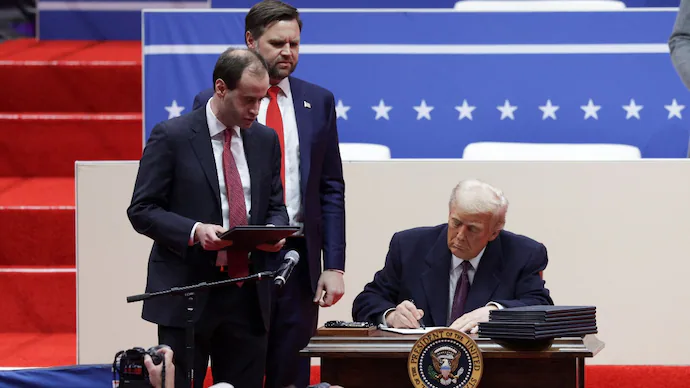Trump Executive Orders 2025
Presidential Executive Orders: A New Direction for American Policy
On January 20, 2025, following his inauguration as the 47th President of the United States, Donald Trump set a bold course for his administration by signing a series of executive orders. These actions signal a clear shift in the country’s priorities, focusing on national security, energy independence, and federal reforms. Let’s take a closer look at how these measures aim to reshape American policy.
Border Security and Immigration
In a decisive move, President Trump declared a “border emergency,” enabling the deployment of military personnel to the U.S.-Mexico border. This initiative, as described by White House officials, is designed to address ongoing concerns about illegal immigration and cross-border crime. The administration also unveiled significant changes to immigration policies, including revisiting existing programs and reintroducing stricter border enforcement protocols. These steps are being hailed by supporters as necessary to secure America’s borders, while critics argue they may spark legal and humanitarian challenges.
Military and Defense Policy
The administration’s approach to military policy reflects a focus on personnel and operational readiness. Among the most notable changes are directives aimed at reshaping internal military administration and revising certain strategic defense priorities. For instance, policies concerning diversity training and vaccination mandates for service members are undergoing significant revisions. These measures, the administration claims, will bolster military cohesion and effectiveness, though they have already ignited debate among defense experts and advocacy groups.

Environmental and Energy Policy
On the environmental front, the new administration has signaled a departure from global climate agreements, including the Paris Accord. This move aligns with its broader goal of prioritizing domestic energy production and reducing regulatory burdens on industries. Critics worry these changes could undermine international climate efforts, while proponents argue they will boost economic growth and energy independence.
Administrative Changes
President Trump’s executive orders also address federal administrative reforms, targeting efficiency and reducing bureaucratic hurdles. These measures include streamlining processes across federal agencies and re-evaluating existing policies to align with the administration’s objectives. While such changes aim to make government more responsive, their implementation may face pushback from within the federal workforce and oversight bodies.

A Path Forward
These executive actions underscore President Trump’s commitment to realigning U.S. policies with his administration’s vision. Supporters applaud the decisiveness of these measures, while critics warn of potential legal challenges and unintended consequences. As these orders take effect, their impact on the nation’s governance and international standing will be closely watched.
The coming months will reveal how these ambitious plans unfold, shaping the trajectory of the country in ways that will be debated for years to come.


Leave a comment